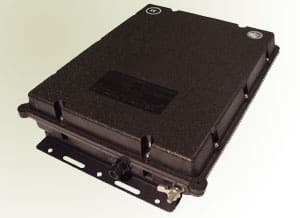Many sailors transitioning into offshore cruising still opt for the versatility of ham radio to communicate with other vessels and to take advantage of SailMail or Winlink with a Pactor modem. To install a ham set, you will need not only a transceiver but an automatic tuner, too. An automatic tuner matches the standing wave ratio (SWR) between the antenna and the radio output to prevent harmful amperage from being reflected back to the radio from mismatched impedance.
Some ham radio sets are designed to interface with a proprietary tuner. Most sets can be coupled with the tuner of your choice. The SG-230 Smartuner is a high-quality, virtually bulletproof device offering interface capability with most HF ham sets and can last many years in the harshest tropical conditions. The Smartuner I installed with my Kenwood TS-50S ham set on Saltaire in 1999 survived a circumnavigation and still works like new. By the way, the Kenwood TS-50S is a great radio, and the only reason I replaced it was because the first one was “confiscated” by representatives from the, uh, Somali Board of Aquatic Tourism in the Gulf of Aden (see article in the May 2005 Ocean Navigator).
The Smartuner employs a microprocessor to adjust antenna length through a set of relays and copper coils. The unit is sealed in a black plastic box measuring 16 by 12 by 3.5 inches, and it is attached at the radio side with an RG-58 connector/coax and at the antenna side with a length of insulated wire. For a long-lasting antenna feed, use Ancor GTO 15 tin-coated insulated wire. I use a non-conductive jelly designed for electrical applications to protect the backstay feed connection, but there are both advantages and disadvantages to this practice. While the jelly does keep the antenna feed wire from corroding, the goop also attracts salt and grime, forming a sticky paste, which eventually becomes a signal-blocking insulator.
The backstay antenna is a “random wire” coupled with the automatic tuner. Most skippers prefer an insulated backstay, although you will occasionally see an insulated shroud on a large yacht. Another option is a whip antenna, which averts the chance of rig failure at the insulators but offers less gain than a long rigging wire antenna.
Rigging insulators, available from GAM Electronics (www.gamelectronicsinc.com) and a few other manufacturers, protect radio transmissions from being grounded by the mast or the ocean. The insulators are installed via swage fittings or compression fittings, the latter offering the advantage of reusability after a rig change. To be on the safe side, though, the prudent skipper uses new fittings.
In a cruiser anchorage, the alpha skipper is the one with the tallest mast. Offshore, it’s the skipper with the strongest signal. And the secret to maintaining a strong signal is having a really good counterpoise grounding both the radio and the tuner to the bronze through-hulls. That means carrying plenty of extra copper foil and inspecting the counterpoise array at least once a month. If the copper is turning reddish-brown and crispy from exposure to saltwater, cut out the affected section and splice in a new piece by crimping the ends together and, if necessary, stapling the foil joints to keep them from pulling apart.
Have fun with ham radio, and enjoy its versatility in offshore worldwide communication.
If the radio, tuner and backstay are installed properly, your “shack” will provide many years of trouble-free service.
Circumnavigator-author Bill Morris is the author of Sun, Wind, & Water: The Essential Guide to the Energy-Efficient Cruising Boat and is a frequent contributor to Ocean Navigator.

